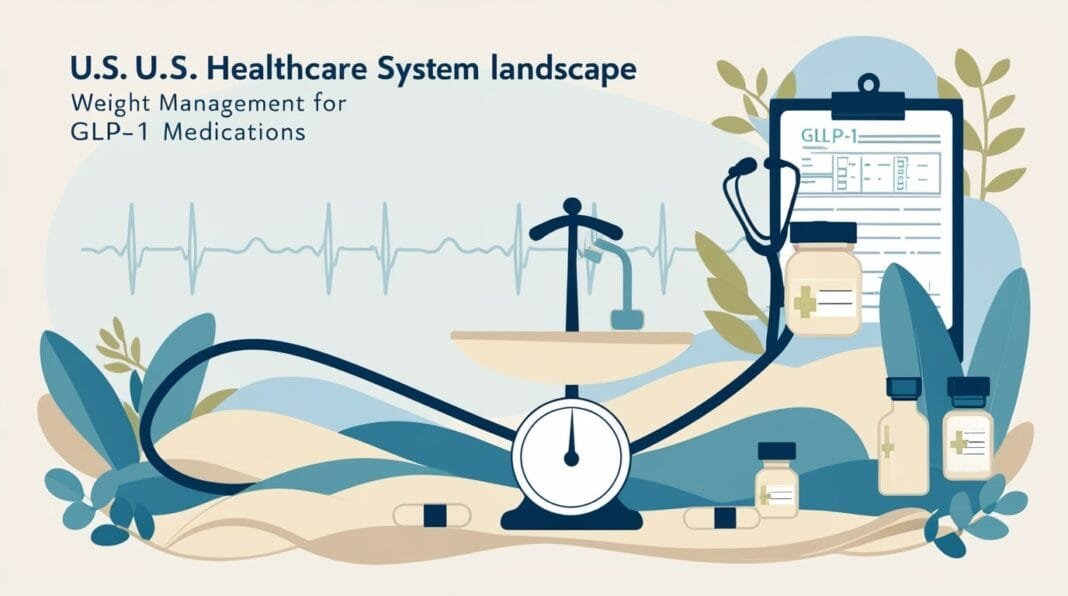Introduction
Obesity continues to pose a significant public health challenge in the United States, with nearly 42% of adults classified as obese according to the Centers for Disease Control and Prevention (CDC). Glucagon-like peptide-1 receptor agonists (GLP-1 RAs), initially developed to manage type 2 diabetes, have emerged as a promising solution for weight management. Medications such as semaglutide (marketed as Wegovy and Ozempic) have demonstrated substantial efficacy in clinical trials for weight loss. However, their potential is tempered by challenges in accessibility, cost, and equitable distribution. This article delves into the medical benefits, accessibility issues, and broader implications of GLP-1 medications, incorporating perspectives from healthcare professionals, policymakers, and patients.
Medical Benefits of GLP-1 Medications
GLP-1 RAs mimic the action of the natural GLP-1 hormone, enhancing insulin secretion, slowing gastric emptying, and reducing appetite. These mechanisms contribute to significant weight loss, with clinical trials showing an average reduction of 15-20% of body weight in patients using these medications. Benefits include:
- Improved Metabolic Health: Patients experience better glycemic control, reduced risk of type 2 diabetes, and lower blood pressure.
- Reduction in Comorbidities: GLP-1 medications decrease the prevalence of obesity-related conditions such as cardiovascular disease, sleep apnea, and joint pain.
- Enhanced Quality of Life: Weight loss achieved through these treatments can lead to improved mobility, energy levels, and psychological well-being.
Dr. Lisa Carter, an endocrinologist at the University of California, notes, “The introduction of GLP-1 RAs represents a game-changer for patients struggling with obesity. These medications address the biological underpinnings of weight gain, offering a targeted and effective treatment.”
Accessibility Challenges
Despite their benefits, GLP-1 medications remain inaccessible to many due to high costs, insurance limitations, and geographic disparities in healthcare availability. Key issues include:
- Cost Barriers: The average monthly cost of GLP-1 medications ranges from $1,000 to $1,500, placing them out of reach for uninsured or underinsured individuals.
- Insurance Coverage: While some private insurers cover these medications, many do not, citing their classification as “lifestyle drugs” rather than essential treatments.
- Medicaid Limitations: Coverage for weight-loss medications under Medicaid varies by state, with many programs excluding these treatments from formularies.
- Health Equity Concerns: Marginalized communities, including low-income and rural populations, face disproportionate barriers to accessing GLP-1 therapies.
Perspectives on Accessibility
Healthcare Professionals
Healthcare providers emphasize the importance of integrating GLP-1 medications into obesity management plans but express frustration over systemic barriers. Dr. Raj Patel, a primary care physician, states, “We’re seeing life-changing results with these medications, yet the high costs and insurance denials are limiting their potential impact.”
Policymakers
Policymakers acknowledge the need for reforms to expand access. Senator Maria Lopez, an advocate for healthcare equity, proposes, “Including weight-loss medications like GLP-1 RAs under Medicare and Medicaid coverage would alleviate economic and health disparities.”
Patients
Patients report transformative outcomes but highlight the financial strain. Janet Miller, a 45-year-old teacher, shares, “I’ve lost 60 pounds on semaglutide, but the cost is unsustainable. We need better insurance support.”
Economic Implications
Obesity contributes to approximately $173 billion in annual healthcare costs in the U.S., driven by complications such as diabetes and cardiovascular disease. Expanding access to GLP-1 medications could yield long-term economic benefits by reducing obesity-related expenses. However, upfront costs remain a concern for both insurers and public programs.
A report from the National Obesity Care Advocacy Network underscores the potential for cost savings, noting, “Investments in effective weight-management therapies could offset future expenditures by decreasing the prevalence of costly chronic conditions.”
Addressing Barriers
Efforts to improve access to GLP-1 medications should focus on the following strategies:
- Policy Reforms: Include weight-loss medications in Medicare and Medicaid coverage, standardizing access across states.
- Insurance Advocacy: Engage with private insurers to recognize GLP-1 RAs as essential treatments rather than optional therapies.
- Pharmaceutical Partnerships: Encourage manufacturers to offer patient assistance programs and reduce prices.
- Community Outreach: Expand access to obesity care in underserved areas through telemedicine and federally qualified health centers.
The Role of Medicaid
Medicaid expansion under the Affordable Care Act has improved access to many health services, but coverage for obesity treatments remains inconsistent. Advocates argue that standardizing Medicaid coverage for GLP-1 medications could significantly impact health equity.
Dr. Anna Morales, a public health expert, emphasizes, “Expanding Medicaid coverage for these medications could bridge gaps in care and address the disproportionate burden of obesity in vulnerable populations.”
Conclusion
GLP-1 medications hold immense promise for managing obesity, offering medical, economic, and public health benefits. Addressing barriers to access, particularly for marginalized populations, is critical to realizing their full potential. Through policy changes, cost-reduction strategies, and enhanced health equity efforts, the U.S. healthcare system can harness the power of GLP-1 therapies to combat the obesity epidemic effectively.
Disclaimer
This article is for informational purposes only and not a substitute for professional medical advice. Consult a healthcare provider for personalized guidance.
References
- Centers for Disease Control and Prevention. (2022). Adult Obesity Facts.
- National Obesity Care Advocacy Network. (2023). Economic Impact of Obesity Management.
- Peer-reviewed articles from PubMed on GLP-1 receptor agonists and weight management.
- Policy statements from the American Medical Association and the Obesity Medicine Association.





